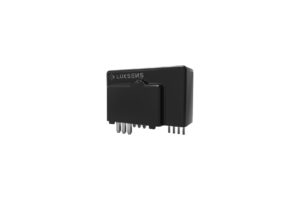Welding Machines
- Home
- INDUSTRIAL AUTOMATION
- Welding Machines
Current Sensors in Welding Machines: Powering Precision, Safety, and Sustainable Efficiency
Introduction:
In the realm of modern manufacturing, the integration of advanced technologies has revolutionized various industrial processes. One such crucial amalgamation is the use of current sensors in welding machines, enhancing efficiency, precision, and safety.
Current Sensor Overview:
Current sensors are instrumental devices that measure and monitor the electrical current flowing through a circuit. In welding machines, these sensors play a pivotal role in ensuring optimal performance by precisely gauging the current levels during the welding process. This real-time monitoring allows for immediate adjustments, ensuring the weld quality and preventing potential issues such as overheating.
Real-time Monitoring for Precision:
Welding demands a precise balance of current for different materials and thicknesses. Current sensors facilitate real-time monitoring, providing accurate feedback to the control system. This enables welders to make on-the-fly adjustments, ensuring that the welding machine delivers the right amount of current for each specific weld, resulting in high-quality and consistent welds.
Enhanced Safety Measures:
The integration of current sensors in welding machines significantly enhances safety measures. By continuously monitoring the current levels, these sensors can detect irregularities such as sudden spikes or drops in current, which may indicate a malfunction or a potential hazard. The welding machine can then automatically shut down or trigger an alarm, preventing accidents and ensuring the well-being of operators.
Energy Efficiency:
Current sensors also contribute to energy efficiency in welding machines. By optimizing the current levels based on the specific welding requirements, energy consumption can be minimized without compromising on weld quality. This not only reduces operational costs but also aligns with the growing emphasis on sustainable and eco-friendly manufacturing practices.
In conclusion, the integration of current sensors in welding machines marks a significant advancement in the welding industry. From real-time monitoring for precision and quality to enhanced safety measures and energy efficiency, the application of current sensors in welding machines underscores their pivotal role in modern manufacturing processes, contributing to improved performance and overall operational excellence.
Product for welding:

- Non-contact measurement of high current
- Close-Loop measurement (compensated)
- Max. measuring range ±200A (DC or AC peak)
- Nearly zero magnetic hysteresis
- Superior Temperature stability and linearity
- High frequency bandwidth 100kHz
- Fast response < 0.5μs

